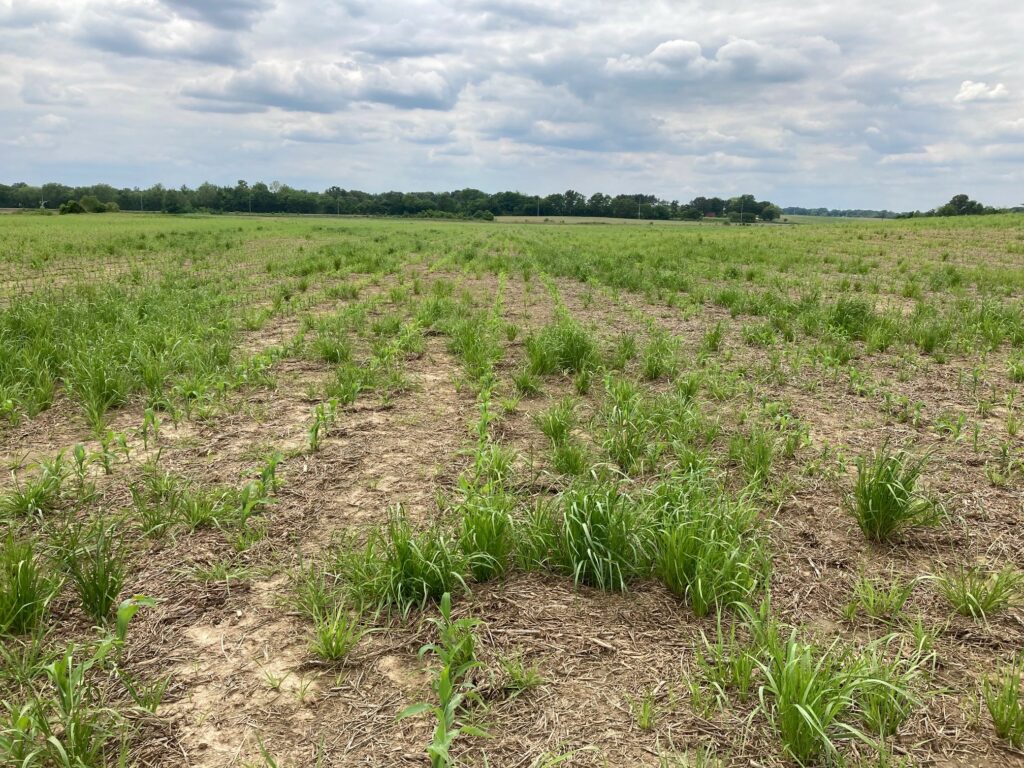It is crunch time for weed control in our row crops. When every minute counts to get herbicide applied it is tempting to cut corners on herbicide stewardship. The forecast would suggest that Tennessee will be entering a bit of a dry spell. Herbicide drift is even harder for crops to recover from when drought stressed so please take time to use best management practices applying all herbicides but particularly products that contain dicamba and 2,4-D. Continue reading
Category Archives: Soybean
Phosphorus Deficiency in Corn and Soybean
| Week 2: Phosphorus |
| In the second installment in our series on nutrient deficiencies in corn and soybean, this week we take quick look at phosphorus: symptomology, sources, and common causes. |
Corn and Soybean Tolerance to Flooding and Submergence
Excessive rainfall over the weekend (5/12 and 5/13) in the North Western river counties has resulted in several calls this week concerning flooding and standing water in corn and to a lesser extent in soybean. Crop response will depend on the length of time the crop remains submerged and varies between corn and soybean. With rain still in the forecast for the next few days, here are a few agronomic considerations to be aware of. Continue reading
Ryegrass Issues Persist and Johnsongrass Management

Ryegrass infestations still persist in some fields. In cotton and soybeans, clethodim can be used now to push this weed on to maturity. In corn, other than just going out and spraying the typical POST corn premix and hoping that pushes the ryegrass on to maturity there is no real solution to controlling it. Continue reading
Nutrient Deficiency – Nitrogen
This is the first of several installments dealing with commonly observed nutrient deficiencies in corn and soybean. Each week, a new macro or micro nutrient will be posted and discussed. The main objective of this series will be to discuss for each nutrient: (1) visual symptomology of deficiency, (2) plant and leaf tissue deficiency levels, (3) common causes of deficiency, and (4) in-season corrective measures. Continue reading
2023 Soybean Replant Decisions
Soybean replanting decisions are almost always a tough call and a subjective decision. In 2023, favorable planting conditions in late March and early April have resulted in quite a few acres being planted. As we head into the month of May, let’s take a look at some objective factors that can help inform replant decisions. Continue reading
Mitigating Potential Herbicide Mixing Issues
This time of year as we move to burndown behind the planter we typically get some reports of mixing issues when either glyphosate or Gramoxone is added to the tank with residual herbicides like atrazine, metribuzin, Cotoran, Caparol, fomesafen or a pyroxasulfone containing product. What happens is the white herbicides will often clabber up and stop up screens and strainers in the sprayer. Continue reading
Application Time of Day Affects Gramoxone Performance on Some Weeds
With the planting season started, many people are thinking about using Gramoxone (paraquat) as a burndown for many weeds present at planting. Gramoxone is a very good broad-spectrum herbicide that has been the go to for burndown of many winter and summer annual broadleaf weeds. With Palmer amaranth starting to emerge, Gramoxone is the only sure thing that will control it. However, it is less consistent controlling some weeds like horseweed (marestail). Continue reading

